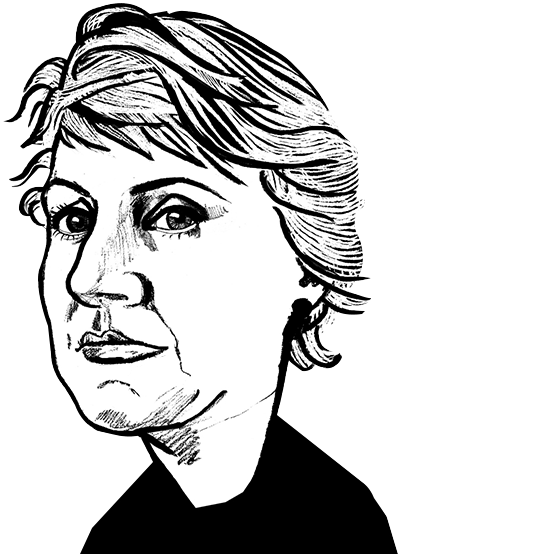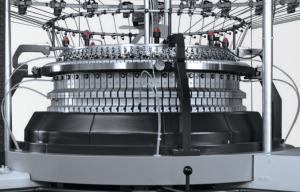
Opinion

World Circular Textiles Day (WCTD)
Marie O’Mahony


Founded by well respected figures from UAL: Centre for Circular Design, Worn Again Technologies and Circle Economy Amsterdam the emphasis is on developing and delivering on a plan of action.
© WCTD.
23rd October 2020
Marie O'Mahony
|
Online
100% circularity by 2050 is the laudable ambition of World Circular Textiles Day (WCTD) founders as they launched their first annual event online on 8th October. The public introduction marks the start of a stakeholder engagement that has already seen a signatory list that reads like a Who’s Who of sustainable fashion and textiles. Founded by well respected (and connected) figures from UAL: Centre for Circular Design, Worn Again Technologies and Circle Economy Amsterdam the emphasis is on developing and delivering on a plan of action.
Dignity, Equity and Equality
The mantra firmly places the social alongside the environmental in creating a roadmap of what circularity should be in 2050. The importance of people as well as planet has certainly been highlighted in 2020 when this year alone, we have seen so many headlines on poor working conditions close to the Western consumer’s home. There is a difference between knowing that something is happening to people that you may never meet and realising that the person standing next to you in the supermarket queue may be a victim of poor working practices.
Circularity is not only a materials question but alongside that we need to be developing systems and changing mindsets - Kate Goldsworthy
It makes it all too real and the consumer is responding as are the increasing number of brands looking to reflect and address framework for circularity that includes both. A decade ago, when conducting a major review of environmental labels and accreditation for the fashion, textile and leather industries, I was struck by how many of them excluded people from the equation. Progress has certainly been made but it is important to acknowledge that blind spots exist still.

© WCTD.
Recently interviewing one North American brand about their positive strategies for circularity they professed total ignorance when pressed on their position on mulesing (the painful removal of wool-bearing skin from sheep) for their range of merino wool garments and accessories. Animal husbandry must surely be part of the conversation around circularity for 2050. WCTD ‘s Phase 1, the first road-mapping stage would certainly be a good place to broaden awareness and bring the topic to the table.
Starting with the material
Kate Goldsworthy acknowledges the need for both natural and synthetic materials to be considered at the very beginning of the design. “Designing the end at the beginning is what we are all about” she says, “circularity is not only a materials question but alongside that we need to be developing systems and changing mindsets.”
This signals a pragmatic move beyond a demand that polyester production simply cease and be replaced by natural fibres or even more ambitious, biomaterials such as Mylo from Bolt Threads a mycelium alternative to leather that is scheduled for launch in products from adidas, lululemon and Stella McCartney in 2021. Perhaps the key word from Goldsworthy’s statement is ‘systems’. At one level how quickly might the Bolt Threads development have progressed without engagement from the aforementioned consortium?

© WCTD.
Almost every sustainable materials conference or trade show that I have attended for the past five years has included at least one biomaterial, yet few have so far progressed to full commercialisation. The second point about systems is that it contains a tacit acknowledgement that a material cannot be considered in isolation of where it has come from, how it is processed, used, reused and recycled. This comes back to designing for the end from the outset. Technology is part of this.
Cyndi Rhoades of Worn Again sees the digital as vital to achieving a more efficient and cost-effective sorting system than the largely manual approach currently in place. This could certainly find a place within digital factories and microfactories as advances in robotic pick and place coupled with Artificial Intelligence (AI) and imaging technologies are being rolled out.
Circle Economy’s Gwen Cunningham sees that such a seismic shift would impact employment that needs careful consideration as people need new skills in the workplace. She also warns that however well-intentioned there is a need to watch out for those blind spots. For example, if a denim garment is sold two, three or four times, how might some of that profit be brought back to the original producers? Such systems already exist in areas such as author licensing fees for example.
A question of scale
Whether manufacturing biomaterials or looking to build efficiencies in the collection of garments for recycling the question of scale looms large. With economies of scale come labour and time savings, making the output market-competitive and ensuring growth. WCTD proposals include the creation of ‘hubs’ to more readily bring all of the different stages of production closer together and to the consumer.

© WCTD.
Industry clusters, in one sense the antithesis of globalisation, already exist where manufacturing processes are brought more closely together reducing transport costs as well as the carbon footprint. These have most recently been encouraged by governments, notably the United States, as key to reshoring industries and creating jobs.
“Europe is definitely a hotspot for circularity innovation at the moment,” says Cyndi Rhoades, who goes on to describe the region as having “the perfect storm of forward thinking companies, technology innovation, relatively high post-consumer collection rates and progressive EU legislation gearing up to support a rapid transition to a circular textiles future, which makes it an ideal region for piloting circular eco-systems.”
She points to the number of regenerative recycling technologies under development as well as automated fibre sorting innovations such as Fibersort in The Netherlands and Syptex in Sweden. These are an important part of the network needed to supply sorted textiles in high volume for mechanical and regenerative recycling processes as they start to scale. Rhoades acknowledges that Europe is not alone, and the momentum of innovation and circularity is building globally: “Ultimately, for the industry to become fully circular, we need all of the pockets and networks to link up, scale up and replicate to bring the system together.”
Stakeholder dialogue
There is a demand from the consumer for greater accountability around circularity and this is leading to greater transparency around supply chains and circularity aims, objectives and achievements. With less to hide from competitors, a (positive) unintended consequence I would suggest is a more open dialogue between stakeholders.

© WCTD.
COVID-19 looks to have accelerated this change according to Rebecca Earley when I put the question to her: ”User behaviour changed, supply chains (especially second hand trade) experienced violent disruption. Producers continued to try to meet orders; brands cancelled them.” Working towards the launch of World Circular Textiles Day (WCTD) she sees that this brought about a very open shared experience and a realisation of the value inherent in developing a stakeholder-driven transparent roadmap towards a positive, shared vision of circularity for 2050. The response so far? “Immense” she says without even a moment’s hesitation.

Business intelligence for the fibre, textiles and apparel industries: technologies, innovations, markets, investments, trade policy, sourcing, strategy...
Find out more












